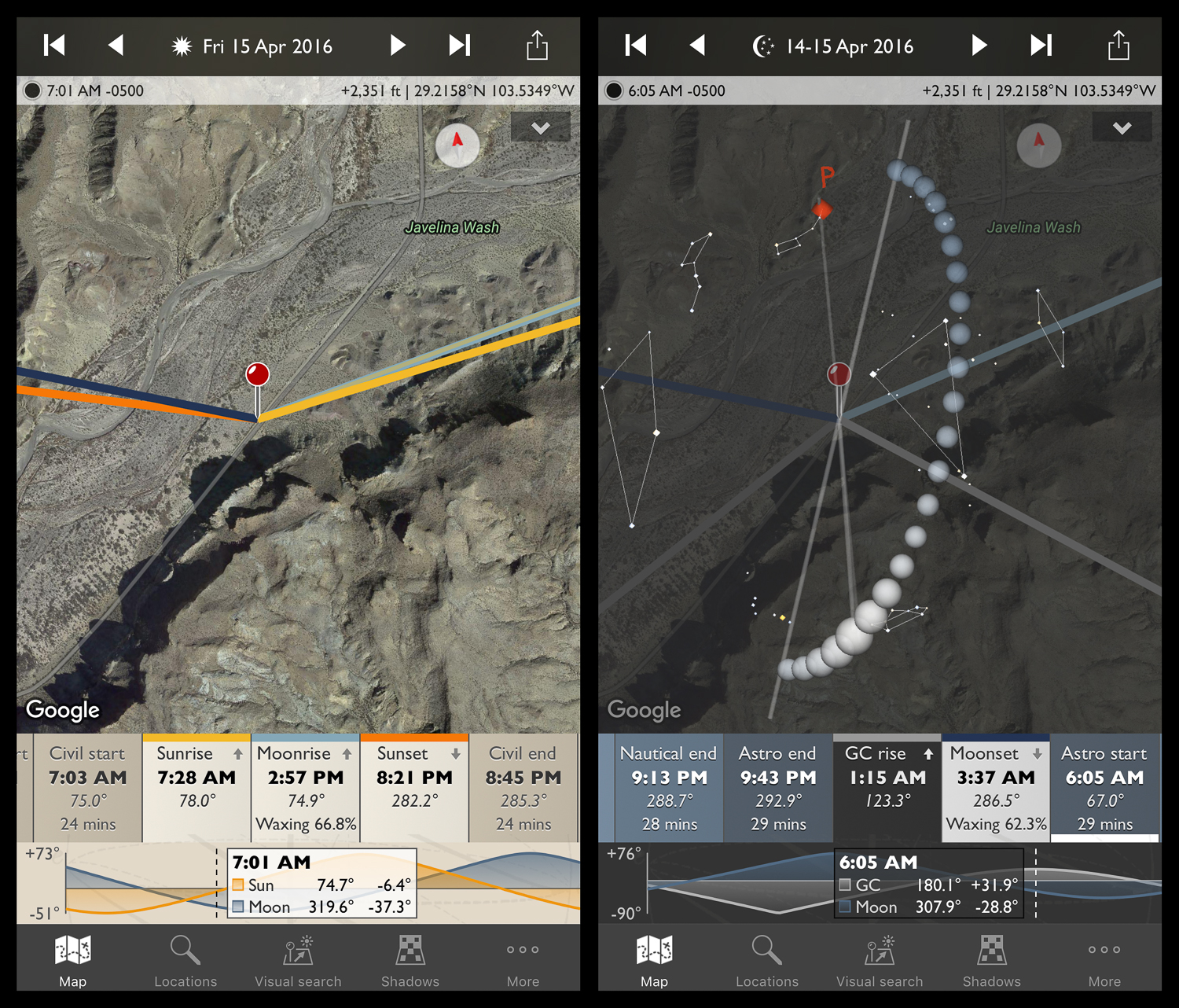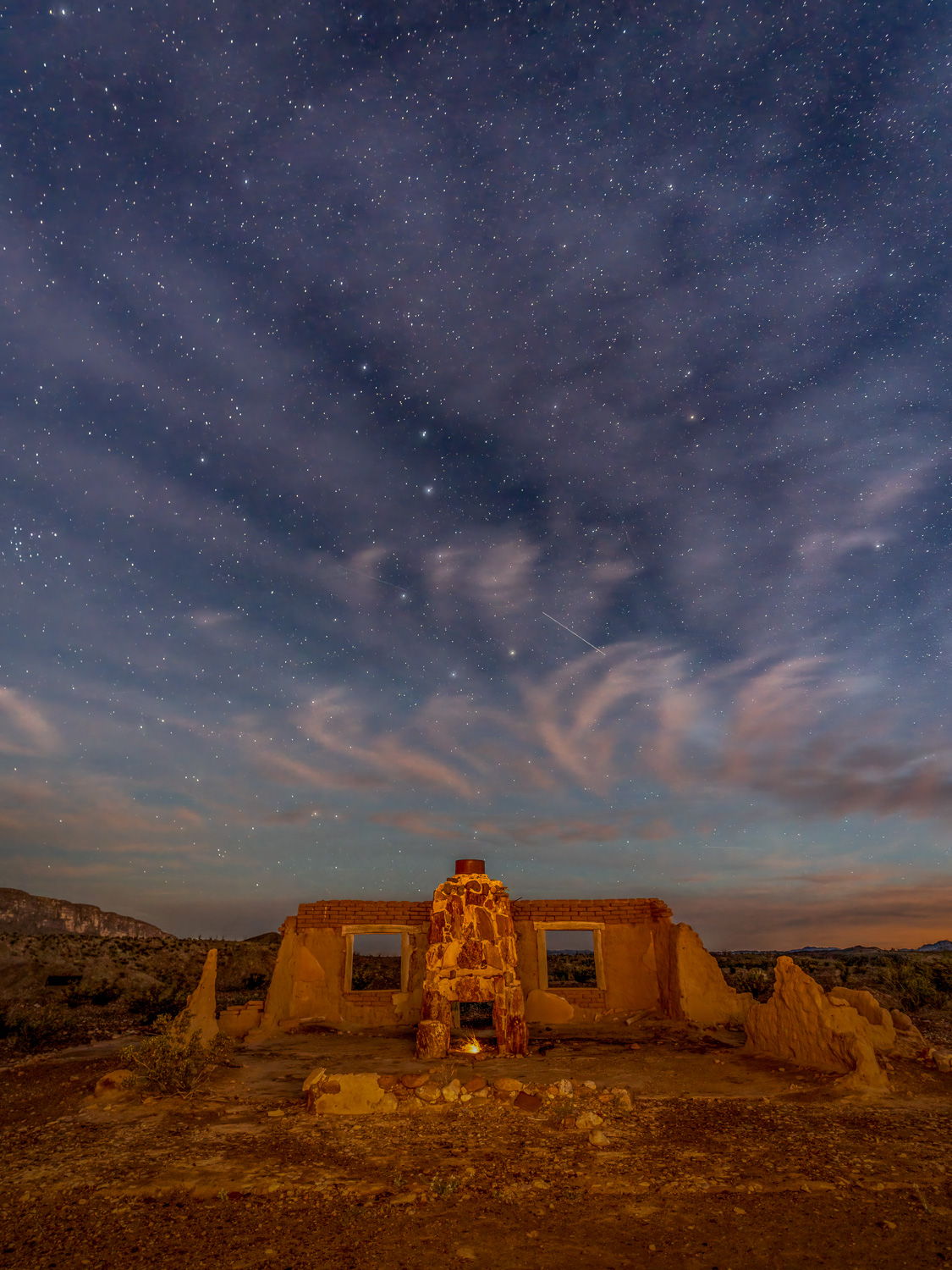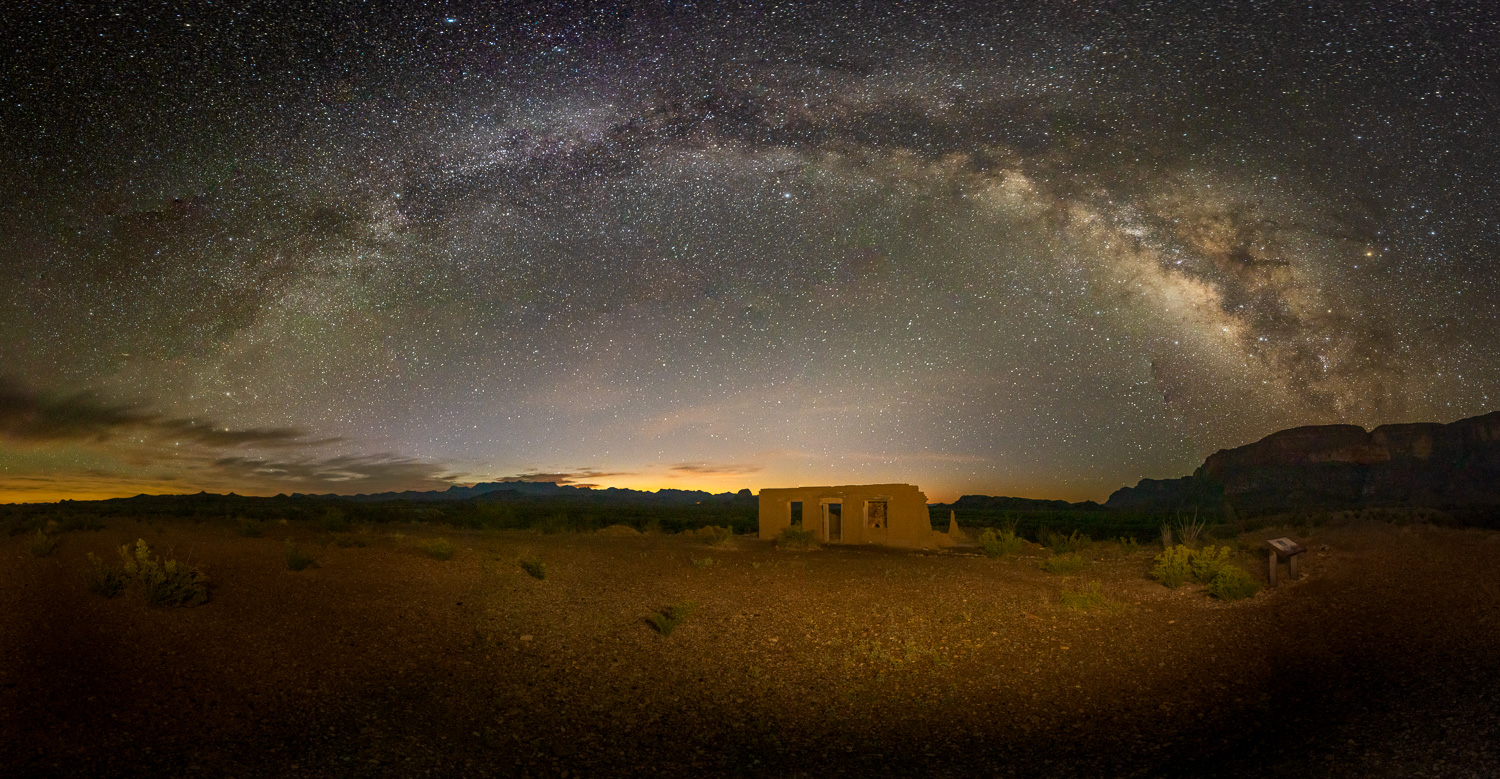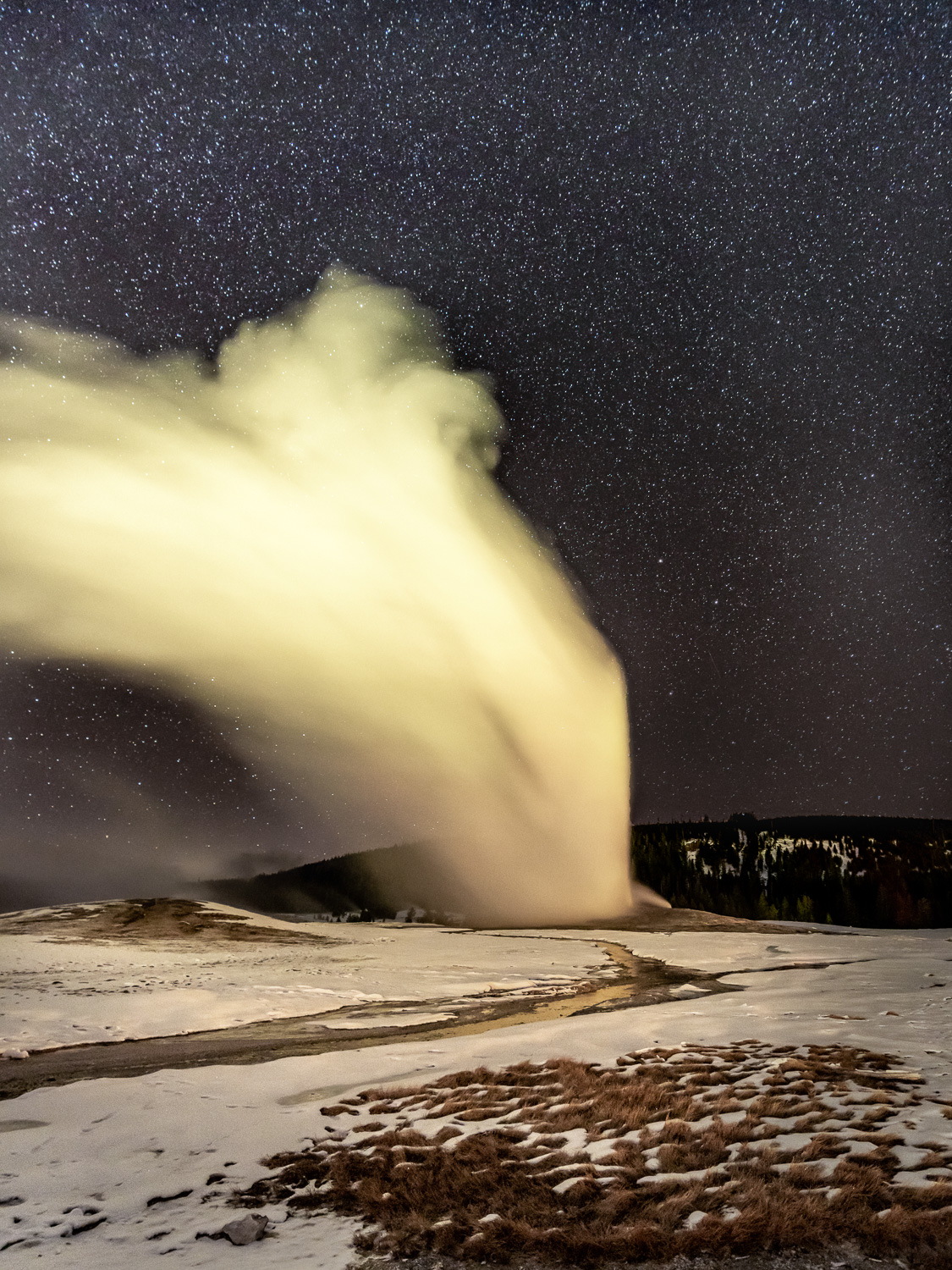Great photographers depend on sound planning processes to capture great photographs. In today’s world, much of that planning comes from smart phone and PC applications. I wrote about an app called SetMyCam Pro on a post last month. I also committed that I would provide more information on how I planned the photograph of the Milky Way Galaxy over Luna’s Jacal in Big Bend last month. Here are some of the elements that I considered in order to obtain that photograph.
Composition: Having an interesting foreground is important in obtaining a good night sky photograph. I use popular search engines to find photographs of the area. In this case, I searched for “Big Bend Milky Way Photographs”. Even though I did not see the exact photograph I had envisioned, I was able to get some good foreground and lighting ideas.
Clear Skies: I guess it goes without saying, but having clear skies is a must. I use one of the many weather apps to determine which night has clear skies. The other element is heat and humidity. Cool, dry nights are the best. Hot, humid nights are less desirable.
Light Pollution: Light pollution can be a huge factor in the number of stars that you can see. Light is emitted by earthbound as well as celestial objects. I use a website called Blue Marble Navigator to determine light pollution from earthbound objects. For celestial objects (sun and moon) I use The Photographer’s Ephemeris (TPE). TPE is available for just about any device including smartphones. I pasted two screen shots from my iPhone TPE app below. The one on the left shows daylight data (sunrise, sunset, etc.) and the one on the right shows nighttime data (moonrise, moon set, Milky Way position, etc.). The great thing about Big Bend is that light pollution is nearly zero in the park. It is a perfect location to photograph the night sky.
Peak Time: I use TPE to determine the optimum time and heading to photograph the Milky Way Galaxy. Ideally, you want the Galactic Center (GC) to be at its peak point. Looking at the right side of the graphic below, you can see that the Milky Way Galactic Center (GC) rises above the horizon at 1:15 AM but the moon does not set until 3:37 AM. This means we have to shoot after 3:37 AM to avoid light pollution from the moon. Next is the first sign of light (Astro Start) at 6:05 AM. Although very faint, you will notice it on long exposures. This means that we need to be finished shooting by 6:05 AM. At the bottom of the graphic you will see that at 6:05 AM the Galactic Center (GC) will be at a heading of 180.1 degrees (that’s exactly South) and at an elevation of 31.9 degrees (about a third of the way up from the horizon). Arriving earlier will put it further east. You can move a “slider” across the bottom of the app to get the coordinates based on the time of day/night.
Scouting: It’s important to conduct a scouting session to the location during daylight hours. I first research all the information above and then head out to see the location in broad daylight. Armed with my old-fashioned compass, I stand at the location and, using the heading from the above research, I determine whether or not there would be objects in the way of the Milky Way. In the case of the Luna’s Jacal Milky Way photograph, the mountain in the background was going to be between the Jacal and the Milky Way but I thought that it would be a good effect. So, I determined that it was a good location and proceeded from there.
We arrived an hour before the optimum time in order to get our equipment set up. Don’t underestimate the amount of time you will need, especially when it’s pitch black. Wear a head lamp but don’t forget to turn it off before you start shooting.

The planning process is essential to a great photograph. You will find that professional photographers depend on these tools to achieve great results. I will provide more information about camera settings and the actual process of photographing the Milky Way during a future post.
PS: My apologies for the long post but it’s a hard subject to cover in few words. :)
PS: Please don’t respond to this message as it will not reach me. Either post a comment or forward your response to my email address (terry@tkahler.com)


